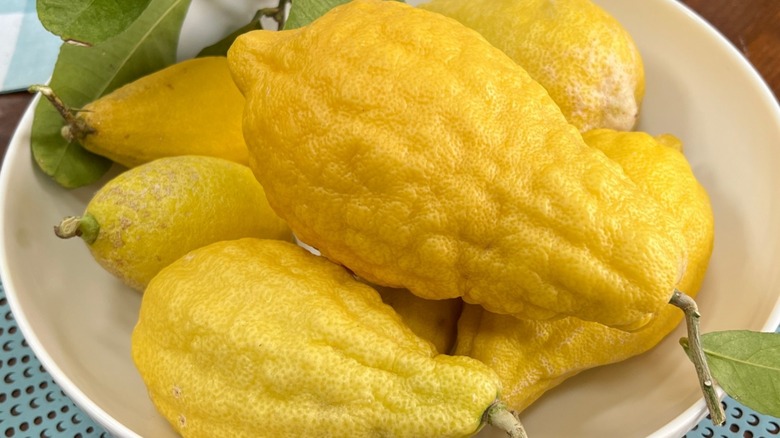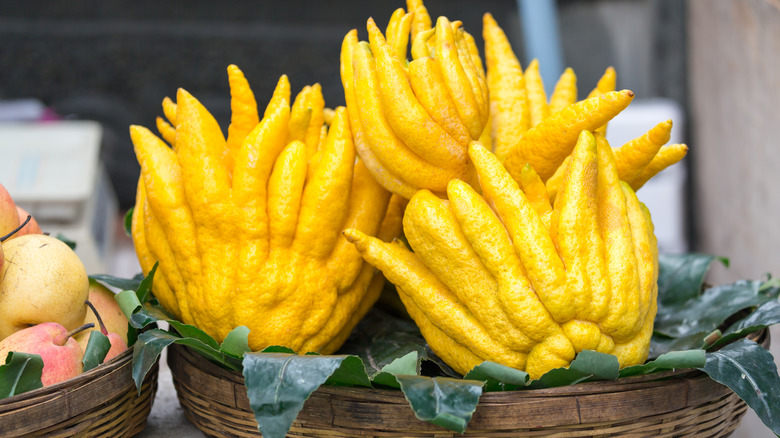What Is A Citron, And What Does It Taste Like?
If you cut into a wrinkly lemon only to find it doesn't have much juice, you might assume you got a dud from the grocery store. Or maybe you accidentally purchased a citron instead. Although citrons are probably one of the citrus fruits you might not have heard of, they're similar in appearance to lemons and originated in the West Indies and the Mediterranean. Although they resemble the appearance of lemons with their yellow, wrinkled skin, they contain small amounts of juice, if any, so they can't be used in all the same ways you'd use lemons in your cooking (no fresh-squeezed lemonade here). And, if you do manage to get some juice out of them, it tastes very sour. In fact, the fruit is actually comprised of mostly rind, with little luscious pulp inside.
This doesn't mean you should throw citrons out, though, because these fruits are renowned for those fragrant rinds that smell like lemons and also have a subtle, sweet taste. These add a zesty aroma and flavor to various sweet and savory dishes (and drinks).
Different varieties of citron
There are numerous different citron varieties available for consumption. One of the most popular is the Etrog citron, which is commonly used as an important symbol during the Jewish holiday Sukkot, and is larger than a lemon with a violet-like scent. It might just be the next superfood from Israel because of how it's used in health elixirs. At first glance, you might not notice that it's not a lemon — until you slice it and see that its pulp is minimal and doesn't contain much juice.
Another variety is Buddha's Hand citron, which boasts a more unusual appearance. It looks like a small yellow lemon with long, wrinkly fingers extending from it. Sometimes called a Fingered Citron, it's popular in Asian countries like Japan and China and can be used as an ornamental fruit because of its pleasant lavender scent. You might be eager to try it in a fun cocktail recipe for lemon and lavender sparklers.
Both the Etrog and Buddha's Hand citron varieties don't contain much juice. So, like other types of citron, they're primarily used for their rinds that can be incorporated into cooking and baking recipes.
How to use citron fruits in cooking
So, how should you use citron rinds? A good tip is to use them as a replacement for the lemon rind when making baked goods, like in a classic cheesecake or lemon cake. You can also use them in savory dishes to add more aroma and sharpness to curries, or as a lemon zest replacement in fish-based dishes.
You can also make candied citron out of the rind, which will give you a good blend of sweet and sour. To make candied citron, you'll have to blanch the citron rind in water before boiling it in syrup and letting it dry. Once you have candied citron, you can use it in a variety of recipes, such as in spicy bread and fruit cakes. When it comes to beverages, one of the vodka infusions you need to start making incorporates citron rinds, instead of lemon or orange, for something a bit different.
If you find these interesting citrus fruits at a grocery store or specialty shop, make sure you buy some and use them in your cooking to give your recipes a burst of lemony flavor. You might also want to display your Buddha's Hand as a kitchen ornament because it will definitely turn heads!


